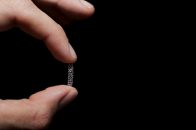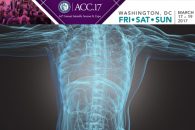The aim of this study was to compare bivalirudin against heparin in patients with ST elevation acute myocardial infarction undergoing transradial primary PCI. Both bivalirudin and the transradial access are strategies aimed at reducing bleeding complications in patients undergoing acute MI. However, the benefit of their combined use is not year clear. Even though…
Leaders Free ACS: Good Results for the Polymer-Free Stent at 2 Years in ACS
Courtesy of the SBHCI. Guidelines recommend dual antiplatelet therapy for a year in patients admitted with coronary acute syndrome. However, patients at high risk for bleeding who receive coronary angioplasty have been historically excluded from studies. The new polymer-free stent BioFreedom allows for the reduction of dual antiplatelet therapy time, due to rapid drug elution…
DEFINE FLAIR and IFR SWEDEHEART: Safety in Revascularization Based on FFR and iFR in Both Stable and ACS Patients
The safety of physiology-based coronary revascularisation has been supported by evidence for years now. DEFER (1998-2001) was one of the first related studies. However, major changes in device and medical treatment safety and efficacy have taken place since then. This could affect clinical results, particularly as regards acute coronary syndromes (ACS). Several studies have cast…
Follow-up at 10 years for invasive vs. conservative strategy for non-ST-segment elevation infarction
The ICTUS (Invasive Versus Conservative Treatment in Unstable Coronary Syndromes) trial compared early invasive strategy with a selective invasive strategy in patients with non-ST-segment elevation acute coronary syndrome (NSTE-ACS), with elevated markers such as cardiac troponin T. The absence of long-term benefit of an early invasive strategy at 1 and 5 years had already been reported.…
Promising outcomes for DEB in long femoropopliteal artery lesions
Courtesy of Dr. Carlos Fava. For type A and B femoropopliteal artery lesions, percutaneous transluminal angioplasty (PTA) with balloon has proven beneficial; however, drug-eluting balloons (DEB) have shown superiority as regards restenosis. Some studies have reported favorable outcomes for DEB in type C and D lesions, but its real benefit is still unclear. This study prospectively…
Infarction in Cariogenic Shock: Prioritizing the Use of Impella Could Improve Survival
This small study suggests the early use of Impella ventricular support device in patients undergoing AMI complicated by cardiogenic shock could help lower mortality rate in this population. However, study design should moderate our enthusiasm, mainly because of the cost of this device. Detroit Cardiogenic Shock Initiative has stressed early identification of cardiogenic…
FFR-Guided ACS Revascularization Apparently Superior to Culprit Vessel Treatment
Using fractional flow reserve (FFR) to guide revascularization of all functionally significant lesions in the setting of acute coronary syndrome appears to improve outcomes over treating only the culprit artery, according to the Compare-Acute trial. This study, conducted at 24 centers in Europe and Asia, enrolled 885 patients who were stable following successful primary angioplasty and…
Higher Radiation Dose in Patients and Operators with Radial Approach (RAD-MATRIX Dosimeter)
Both physicians and patients are exposed to higher radiation doses during radial access PCI compared to femoral, according to this large contemporary study on high volume PCI operators of ACS patients. Even though the difference in radiation exposure was relatively small for patients (approximately 10% higher for radial PCI) this translated into double the…
Pregnancy and Risk of Spontaneous Coronary Artery Dissection: How to Proceed
Courtesy of Dr. Pablo Baglioni. Between the years 2000 and 2015, the authors of this article searched for reports on spontaneous coronary artery dissection (SCAD) in pregnant or immediate post-partum women aiming at defining the clinical characteristics of this pathology and offering management recommendations. Information on 120 women was analyzed; 116 were between 22…
Best Strategy for Acute MI and Multivessel Disease
The goal of this study was to assess all available revascularization strategies for patients undergoing ST elevation acute myocardial infarction and multivessel disease. Among the strategies to treat this group of patients, there were: culprit vessel intervention only, culprit vessel intervention and, in case of success, multivessel intervention, culprit vessel intervention with staged revascularization,…
Thrombus Aspiration during Primary PCI Does Not Improve Clinical Outcomes
Thrombus aspiration during primary PCI in ST elevation MI has been extensively used; however, recent studies have questioned its efficacy and safety. This meta-analysis looked into individual patient data to determine the benefit and safety of thrombus aspiration during primary PCI. It included all randomized and controlled studies assessing manual thrombectomy vs. conventional…










